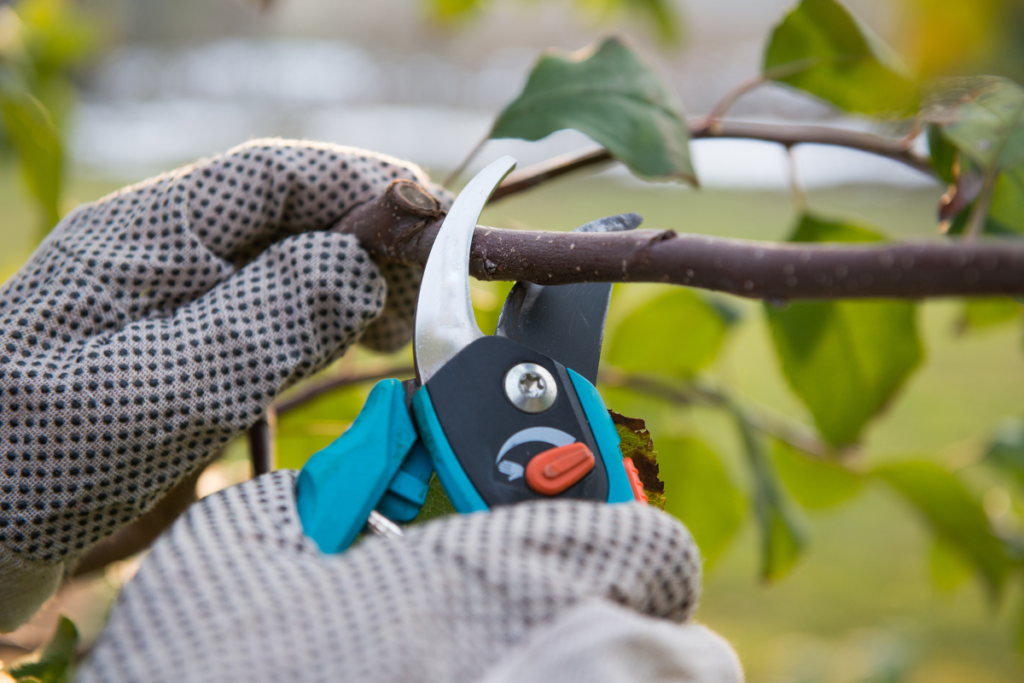Tree pruning plays a crucial role in maintaining the health and longevity of your trees, beyond simply enhancing their appearance. Whether you have a sprawling backyard filled with diverse tree species or a few stately trees lining your property, understanding the nuances of tree pruning can significantly impact their well-being. In this comprehensive guide, we’ll explore in depth why tree pruning matters, the myriad benefits it offers, the best practices to follow for different types of trees, and when it’s best to seek professional assistance.
Understanding the Basics of Tree Pruning
Tree pruning involves the strategic removal of branches to improve the health, structure, and appearance of trees. By carefully selecting which branches to trim and when to prune, you can promote optimal growth and longevity for your trees. Basic pruning principles include removing dead or diseased branches, shaping the tree’s canopy to enhance airflow and sunlight penetration, and maintaining a balanced structure to prevent overgrowth and potential hazards. Proper pruning techniques not only contribute to the tree’s health but also enhance the overall aesthetics of your landscape. Understanding these fundamentals empowers homeowners to effectively care for their trees and create a safer, more beautiful outdoor environment.

Why Tree Pruning Matters
Trees are more than just ornamental features in our landscapes; they are living organisms that require care and attention to thrive. Pruning is a key aspect of tree care because it promotes overall tree health and vitality in several important ways:
- Health Improvement: By removing dead, dying, or diseased branches, pruning prevents the spread of diseases and pests throughout the tree. These branches can serve as entry points for pathogens, which, if left unchecked, can compromise the tree’s health and potentially lead to its decline.
- Safety: Over time, trees can develop weak or hazardous branches that pose risks to property and safety. Pruning helps eliminate these risks by removing structurally unsound branches that could fall during storms or high winds, reducing the likelihood of property damage or personal injury.
- Aesthetic Appeal: Beyond health and safety considerations, pruning enhances the natural beauty and form of trees. By shaping the canopy and promoting balanced growth, pruning contributes to a more visually appealing landscape, allowing trees to complement their surroundings while maintaining their natural character.
- Fruit Production: Fruit trees, in particular, benefit from regular pruning as it stimulates the production of high-quality fruit. Proper pruning techniques encourage the growth of fruit-bearing wood and ensure adequate sunlight exposure and airflow, essential for optimal fruit development.
- Structural Integrity: Effective pruning promotes the development of a strong tree structure. By strategically removing branches that compete for space or grow at awkward angles, pruning helps trees grow with balanced limb distribution and reduced risk of structural failure over time.
Benefits of Tree Pruning
The benefits of tree pruning extend beyond immediate visual improvements to long-term health and sustainability:
- Improved Air Circulation and Sunlight Penetration: Pruning opens up the canopy, allowing sunlight to reach interior branches and promoting better air circulation. This enhances photosynthesis, the process by which trees convert sunlight into energy, thereby supporting overall growth and vitality.
- Disease Prevention: Removing dead or diseased branches reduces the likelihood of fungal infections and infestations by insects that can weaken the tree’s immune system. Pruning also allows for early detection of potential health issues, enabling prompt intervention and treatment as needed.
- Enhanced Longevity: Healthy, well-maintained trees have a longer lifespan. Regular pruning contributes to the longevity of trees by reducing stress on branches, promoting new growth, and minimizing the impact of environmental factors such as severe weather conditions.
When to Prune Your Trees
The timing of tree pruning depends on various factors, including the species of tree, its growth characteristics, and the desired outcome:
- Spring: Most trees benefit from pruning in late winter to early spring, before new growth begins. This timing promotes vigorous growth and minimizes stress on the tree.
- Summer: Fruit trees, in particular, may benefit from summer pruning to manage growth and support fruit production. Pruning during the summer months can help maintain the tree’s shape and improve fruit quality.
- Fall: Certain tree species are best pruned in the fall when they are dormant. Fall pruning can help shape growth, remove dead wood, and prepare the tree for winter.
- Winter: Pruning during the dormant season, when the tree’s structure is more visible without leaves, is ideal for deciduous trees. Winter pruning promotes healing and prepares the tree for spring growth.
The Role of Pruning in Disease Prevention
Pruning plays a crucial role in preventing the spread of diseases among trees. Dead or diseased branches can harbor pathogens that weaken the tree’s immune system and make it more susceptible to infections. By promptly removing infected branches and promoting healthy growth, pruning helps mitigate disease outbreaks and ensures the long-term health of your trees. Regular inspections and targeted pruning can identify early signs of disease, allowing for timely intervention and treatment. This proactive approach not only protects individual trees but also contributes to the overall health of your landscape, fostering a thriving ecosystem where trees can flourish.
Pruning for Safety: Minimizing Risks Around Your Property
Pruning for safety is essential to safeguard your property and ensure the well-being of everyone in your vicinity. By selectively removing hazardous branches that are weak, overgrown, or diseased, you reduce the risk of accidents during storms or adverse weather conditions. These branches can pose significant threats, potentially causing damage to structures, vehicles, or even endangering individuals. Professional arborists assess tree health and structural integrity, recommending appropriate pruning techniques to enhance safety without compromising the tree’s overall health. Regular inspections and proactive pruning help maintain a safe outdoor environment, allowing you to enjoy your property with peace of mind.
Pruning for safety also involves strategic pruning to maintain clearances around buildings, power lines, and walkways. By keeping branches away from rooftops and utility lines, you minimize the risk of property damage and power outages caused by falling limbs. Thoughtful pruning practices can also improve visibility and security around your property, enhancing surveillance and reducing hiding spots for potential intruders. Investing in professional tree care services ensures that safety considerations are prioritized while preserving the natural beauty and functionality of your landscape. By taking proactive measures to prune for safety, you create a secure and inviting outdoor space for your family and visitors.
Enhancing Tree Aesthetics Through Thoughtful Pruning
Enhancing tree aesthetics through thoughtful pruning goes beyond mere maintenance—it’s about sculpting living sculptures that complement your landscape. Thoughtful pruning involves understanding the tree’s natural growth patterns and selectively removing branches to highlight its unique form and character. By creating balanced canopies and enhancing symmetry, you can transform ordinary trees into focal points of beauty within your garden or yard. Professional arborists employ artistic pruning techniques to achieve desired aesthetic effects while ensuring the tree’s health and structural integrity are maintained. Whether shaping ornamental trees for visual appeal or preserving mature trees’ majestic presence, thoughtful pruning enhances your outdoor environment’s overall aesthetic quality and curb appeal.
Conclusion
Tree pruning isn’t just a maintenance task—it’s a fundamental investment in the health, safety, and beauty of your trees and landscape. By understanding the benefits of proper pruning techniques, such as improving air circulation, enhancing tree aesthetics, and preventing disease, you can significantly prolong the life and vitality of your trees. Whether you’re managing fruit trees for optimal harvests or preserving mature trees for their natural beauty, regular pruning ensures they thrive for years to come.
For expert tree pruning services in Ocala that prioritize health, safety, and aesthetic appeal, contact Tree Service Legends. Located at 3585 SW 38th Terrace N105, Ocala, our team of professional arborists is committed to providing quality tree care tailored to your needs. Call us today at (352) 558-2348 to schedule a consultation and discover how our pruning services can benefit your trees and enhance your outdoor environment. Trust Tree Service Legends for all your tree care needs, and let us help your trees reach their full potential.
